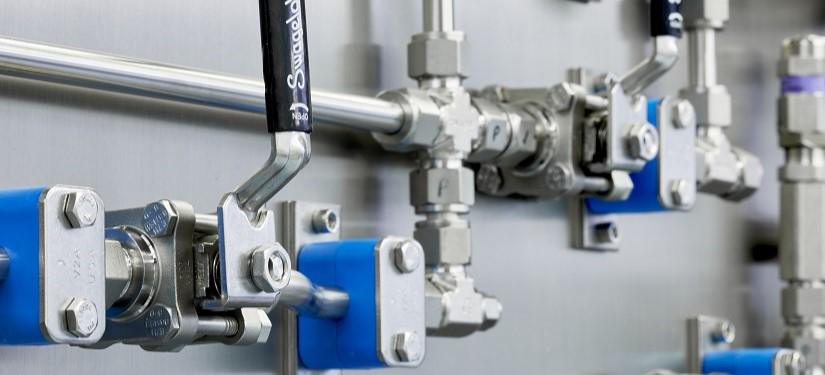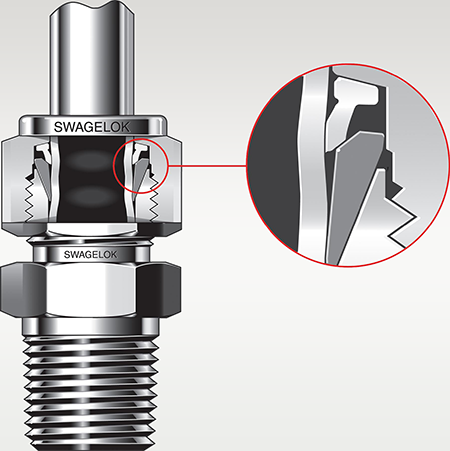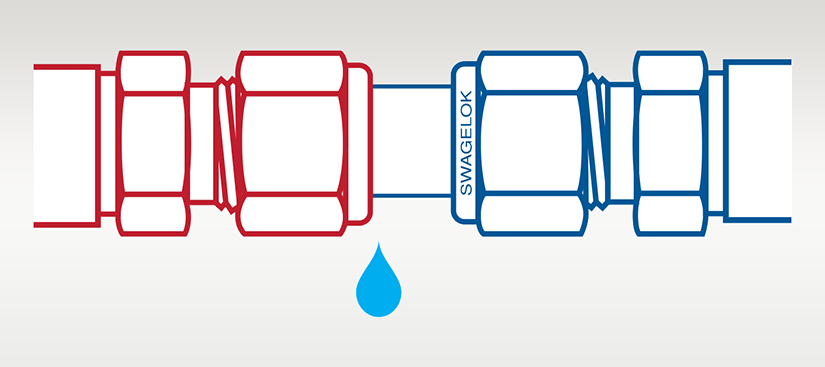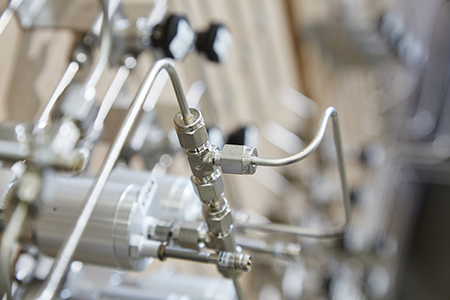
IOGP Spec: How the latest small-bore tubing and fittings enhance safety for oil and gas producers
By Jon Kestner, Senior Product Line Manager, Swagelok Company
Features fittings gas IOGP oil producers S-716 specification Swagelok tubing
Safety is the top priority for many oil and gas producers around the world — so when the industry makes a significant move toward safer fluid system operation, everyone should take notice.
In March 2021, the International Association of Oil & Gas Producers (IOGP) published the latest version of its S-716 “Specification for Small Bore Tubing and Fittings,” which defines a set of standardized requirements for small-bore tubing, tube fittings, piping, and system components that are used in petroleum and natural gas industry applications. The requirements focus on the design, material selection, installation, testing, inspection, and marking of these fluid system components.
This new specification sought input from various industry stakeholders to determine key parameters that would help improve the general safety of oil and gas fluid systems while also reducing total cost of ownership. For oil and gas professionals, there a few notable areas to consider.
Comparing Types of Tube Fittings for Leak-Tight Performance
First, S-716 specifies the use of compression tube fittings, defined as flareless, double-ferrule fittings. To meet the specification, single-ferrule designs cannot be used.

Figure 1. The best fitting choice for most applications will provide hinging colleting action in which double ferrules help to securely grip the tube and provide both direct and axial support, mitigating the effects of vibration and maintaining a leak-tight tube grip.
Because single-ferrule fittings are more prone to leaking in applications subject to vibrations and other operational stresses, this parameter helps oil and gas producers maintain leak-tight connections throughout their systems.
The differences between single-ferrule and double-ferrule designs are key:
- Single-ferrule fittings, also known as bite-type fittings, grip the tubing at a single point of contact — the front nose of the ferrule — around the tubing’s circumference. This lone point of contact is thereby prone to working loose when subjected to continued pulsation, shock, vibration, or other conditions that are inherent to fluid system operation.
- Double-ferrule fittings, or compression fittings, provide an additional point of contact and grip on the tube, making them a better choice for leak-tight performance.
However, not all compression tube fittings are created equal. The best choice for most applications will provide hinging colleting action that securely grips the tube and provides both direct and axial support (Figure 1). This design helps mitigate the effects of vibration and maintain a leak-tight tube grip.
Product Intermix Prohibited
Next, the updated specification additionally calls for the use of a single tube fitting brand and prohibits the intermixing of fittings from different manufacturers (Figure 2). S-716 joins other notable specifications in doing so, helping to promote more universal practices for fittings across industries.

Figure 2. The S-716 specification prohibits mixing components from different manufacturers, as doing so can often result in unpredictable performance.
Why? Because even when manufacturers use the same materials for a component, the materials’ compositions may differ, yielding slightly different resistances to corrosion or temperature. Additionally, the components themselves may be made to different tolerance and design specifications, as no commercial design standard exists for tube fittings. For these reasons, mixing components from different manufacturers can often result in unpredictable performance in the field, including leaks and potential related safety problems.
New Material Requirements and Cost-Effective Material Combinations
S-716 further recognizes the two industry-accepted 6 moly (6Mo) material grades, UNS N08637 (6HN), and UNS S31254 (alloy 254). 6HN is a more robust grade of 6Mo that provides enhanced resistance to chloride-induced stress cracking. Its inclusion gives system operators the opportunity to improve system performance and safety. New tube hardness requirements are also included to ensure tube and fitting compatibility.
While the traditional thinking when using higher-grade alloys is to use the same alloy for the fitting and tubing, this is sometimes unnecessary and expensive. Recognizing this, the S-716 specification now enables the use of engineered combinations – the use of different tubing and fitting materials in the same fluid system – to achieve the highest levels of performance and cost-effectiveness.

New IOGP specifications for small-bore tube fittings are meant to improve the general safety of oil and gas fluid systems while also reducing total cost of ownership. All images © Swagelok 2023
When taking this approach, it is important to be sure such combinations have been approved for service by the fitting manufacturer. This is important because the material combination’s ratings are influenced by not only material compatibility, but also the tube thickness, operating pressures and temperatures, and other factors. A reliable manufacturer should be able to help guide you toward the right combinations for your needs.
Installation Best Practices
Finally, the specification provides new guidelines for hands-on assembly training, noting “the tubing system shall be installed by personnel who have been certified by the fittings manufacturer’s approved product training program or an equivalent.” Training like this can help installers create leak-tight connections required in applications where high pressures, vibration, and temperature changes are regular parts of ongoing operations.
This specification update is poised to contribute to safer and more reliable oil and gas fluid system operations around the world. Selecting the right tubing and tube fittings, material choice, training, and other factors are important, and their further standardization will help make for a stronger industry.
An original version of this article appeared on the Swagelok Reference Point blog here: www.swagelok.com/en/blog/small-bore-tubing-fittings-specification-iogp.
Print this page